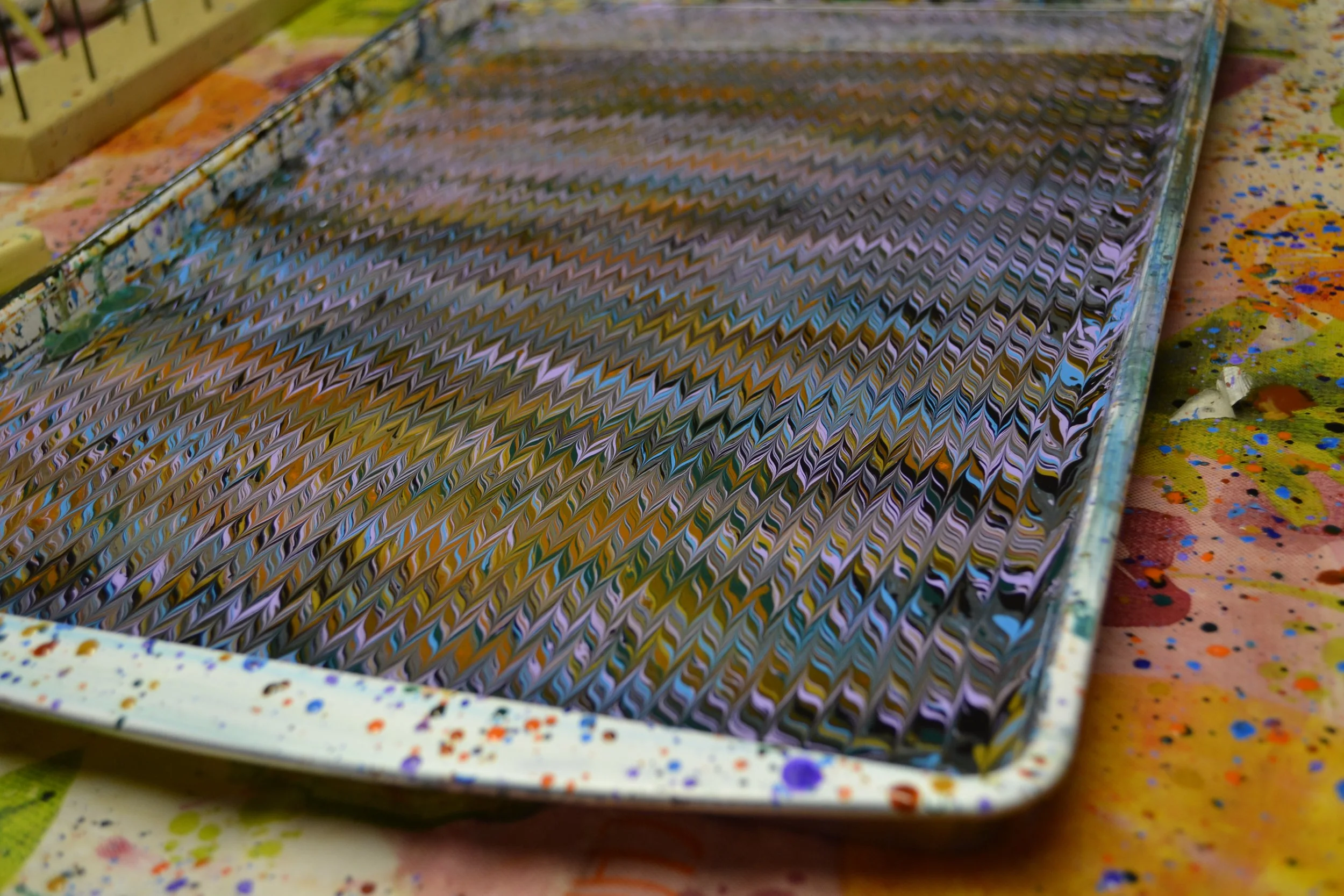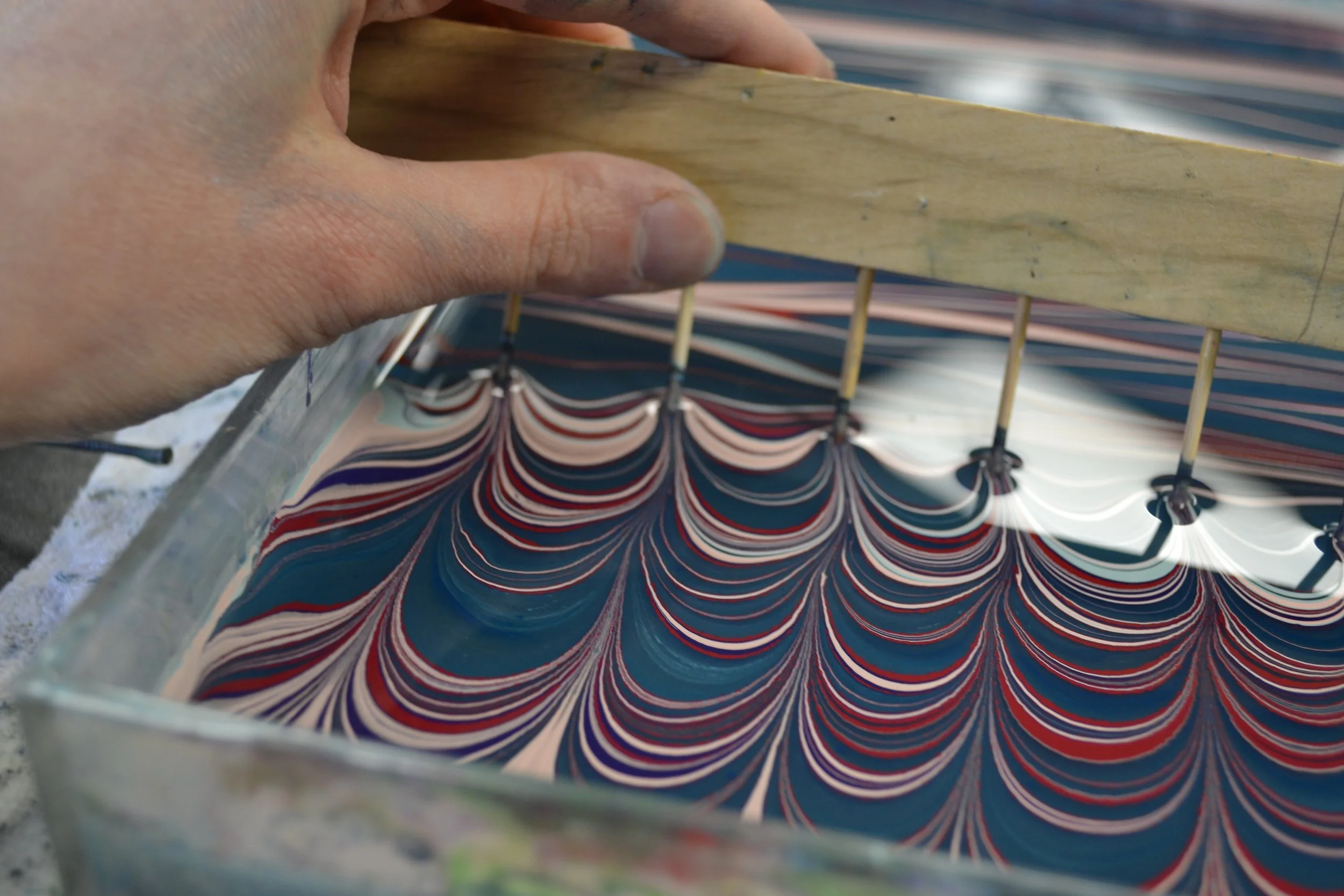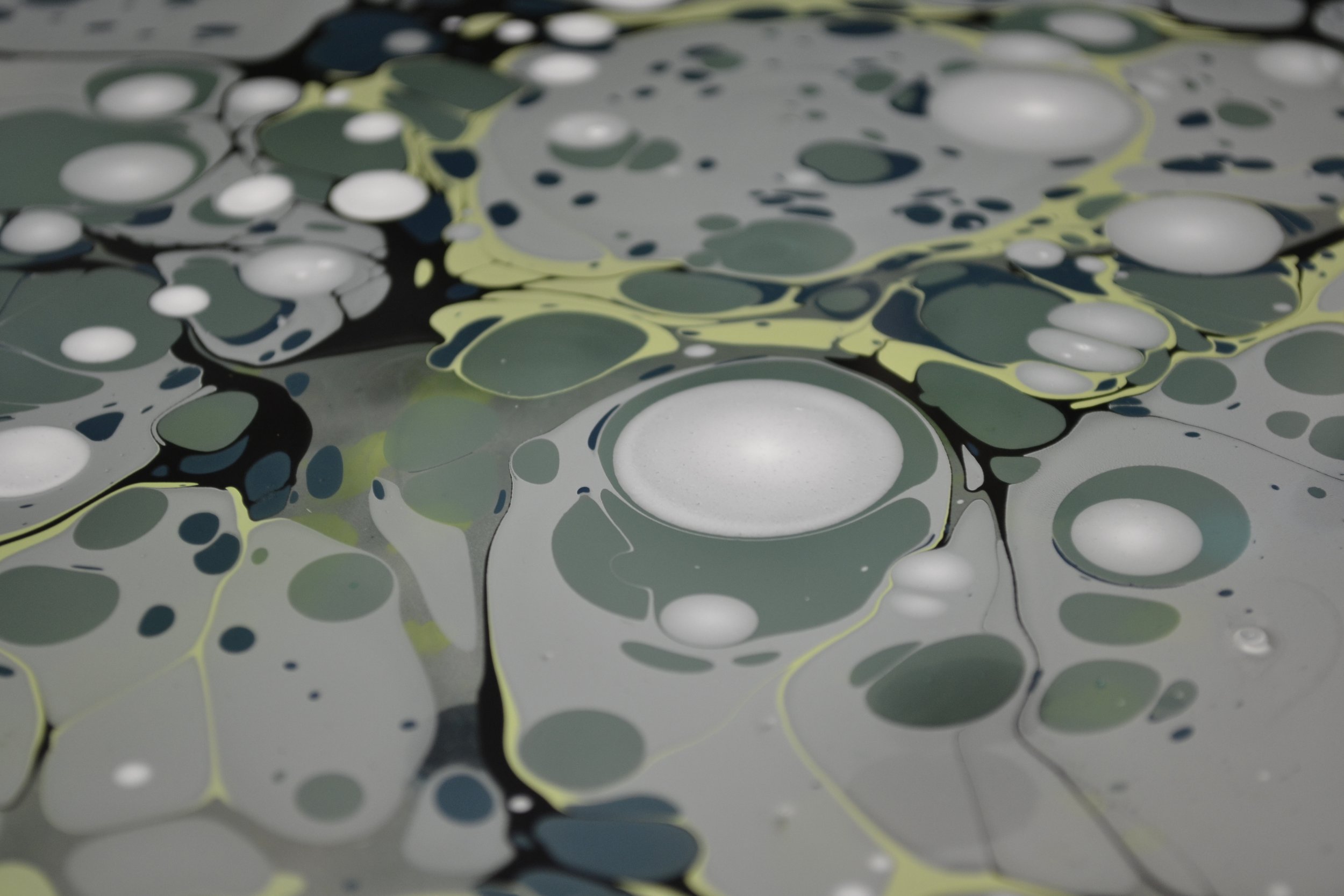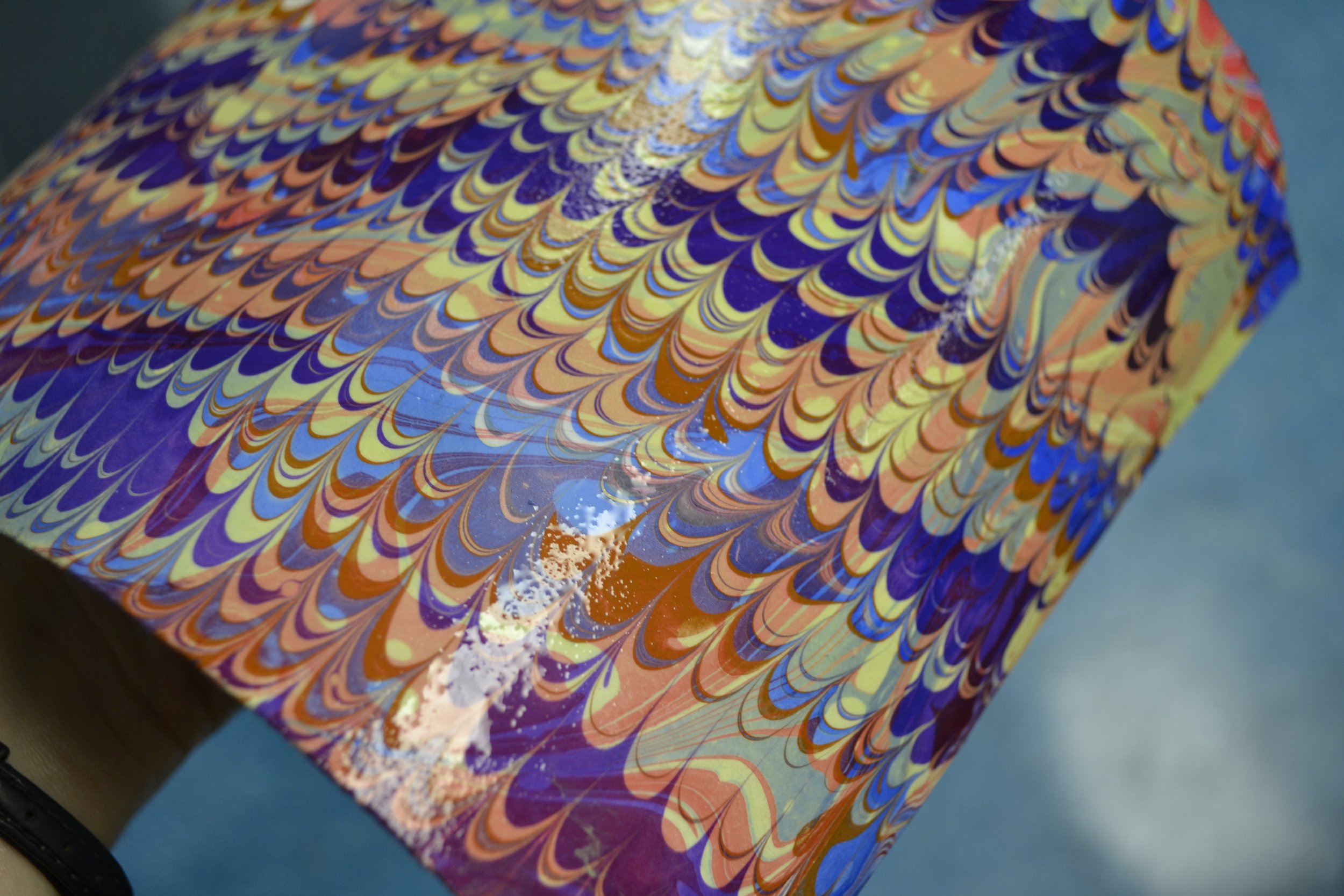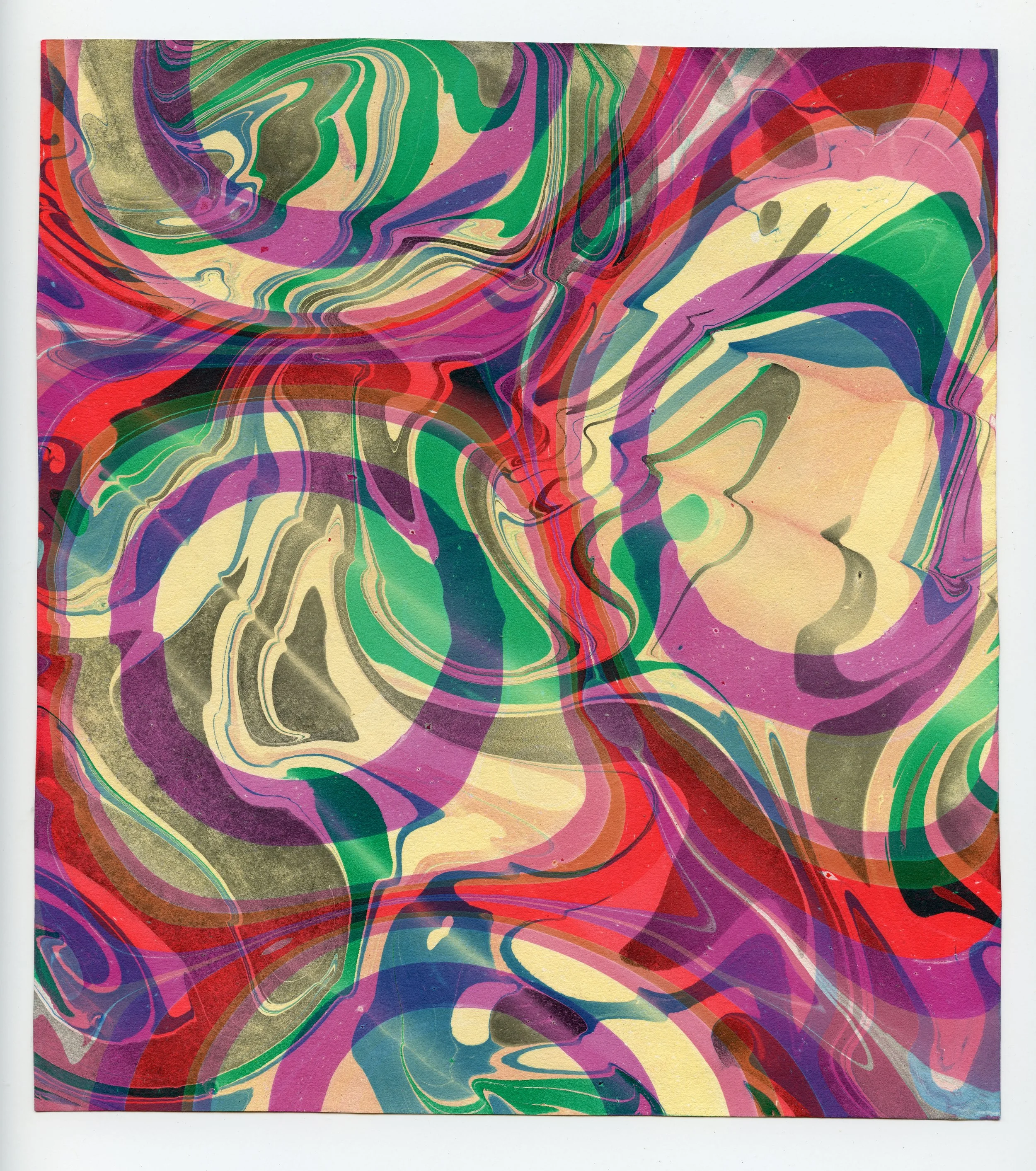
Traditional Paper Marbling
(2018-2025)
After practicing my self-discovered oil paint marbling for a few years, I decided that it was time to take the plunge and learn the techniques of traditional Turkish paper marbling.
Marbling is the centuries-old art form of transferring paint suspended on water to a piece of paper, fabric, or other material. Paints are dripped into a tray of water thickened with carrageenan and manipulated with skewers, rakes, and combs to produce mesmerizing patterns. Small droplets of paint can also be added with broomstraw whisks. When the desired design is achieved, the marbler dips their paper onto the water’s surface to transfer the design.
Paper is prepared in advance with a solution of alum, a mordant (a.k.a. binding agent). This causes a chemical reaction when paper comes into contact with the paint. The paint pattern floating on the surface of the water will transfer instantly to the paper and will stay in place because of the alum. If no alum was present, the colors would run and blur.
For most of its history, marbling has been done with watercolor or gouache paints. Many marblers today, including myself, use acrylics.
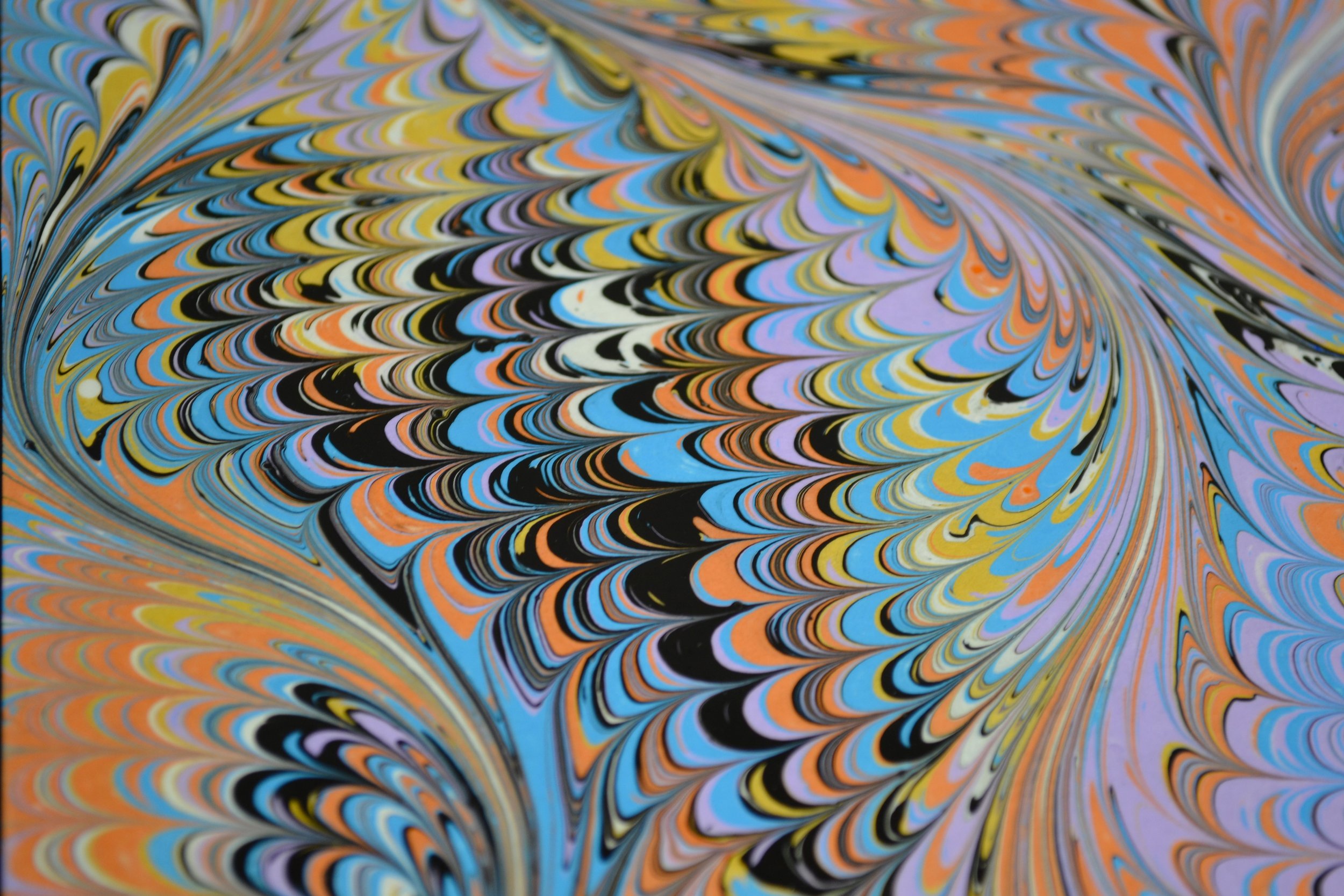
Some of my first attempts at traditional marbling

Zebra pattern - Some of my first attempts at traditional marbling
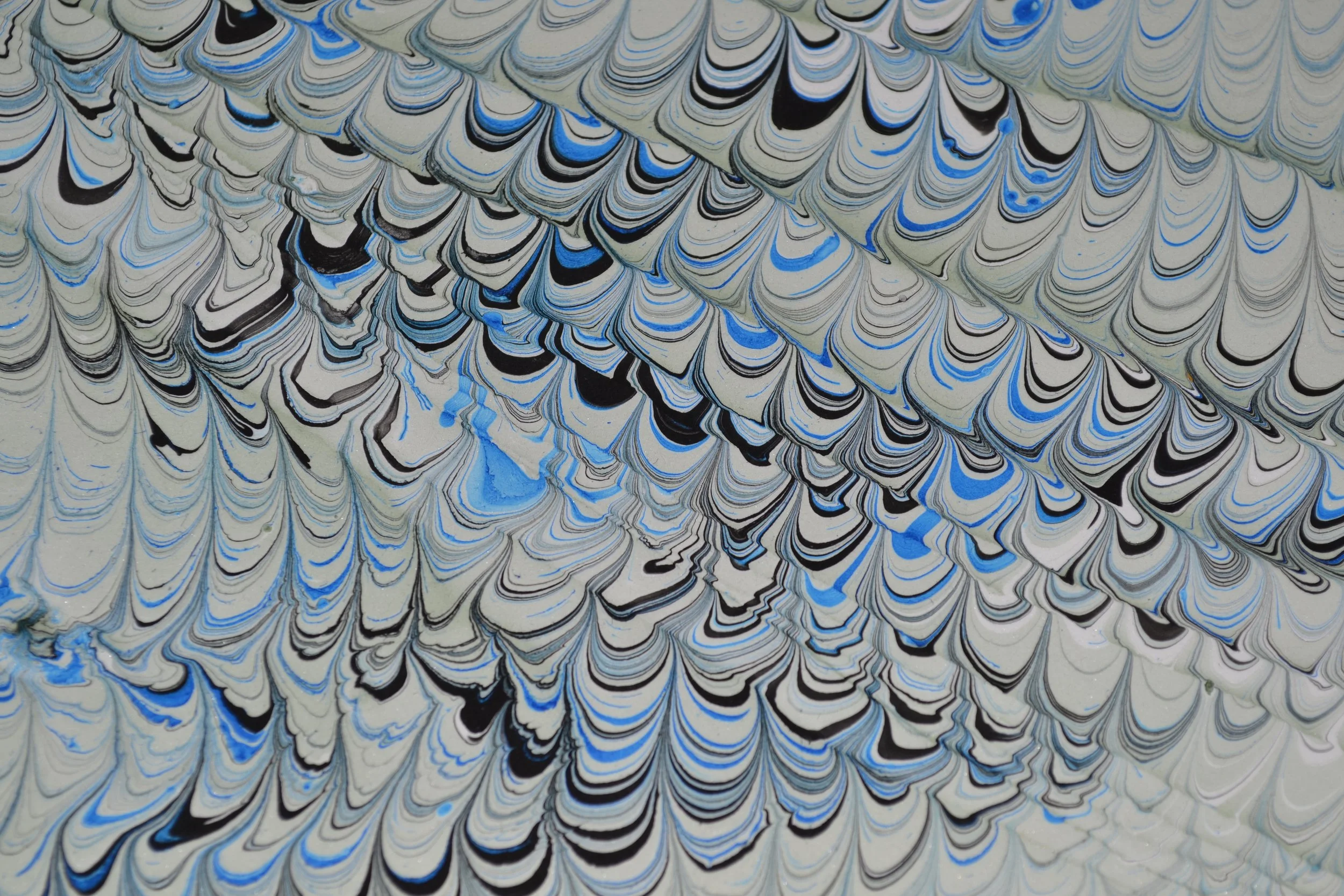
Some of my first attempts at traditional marbling
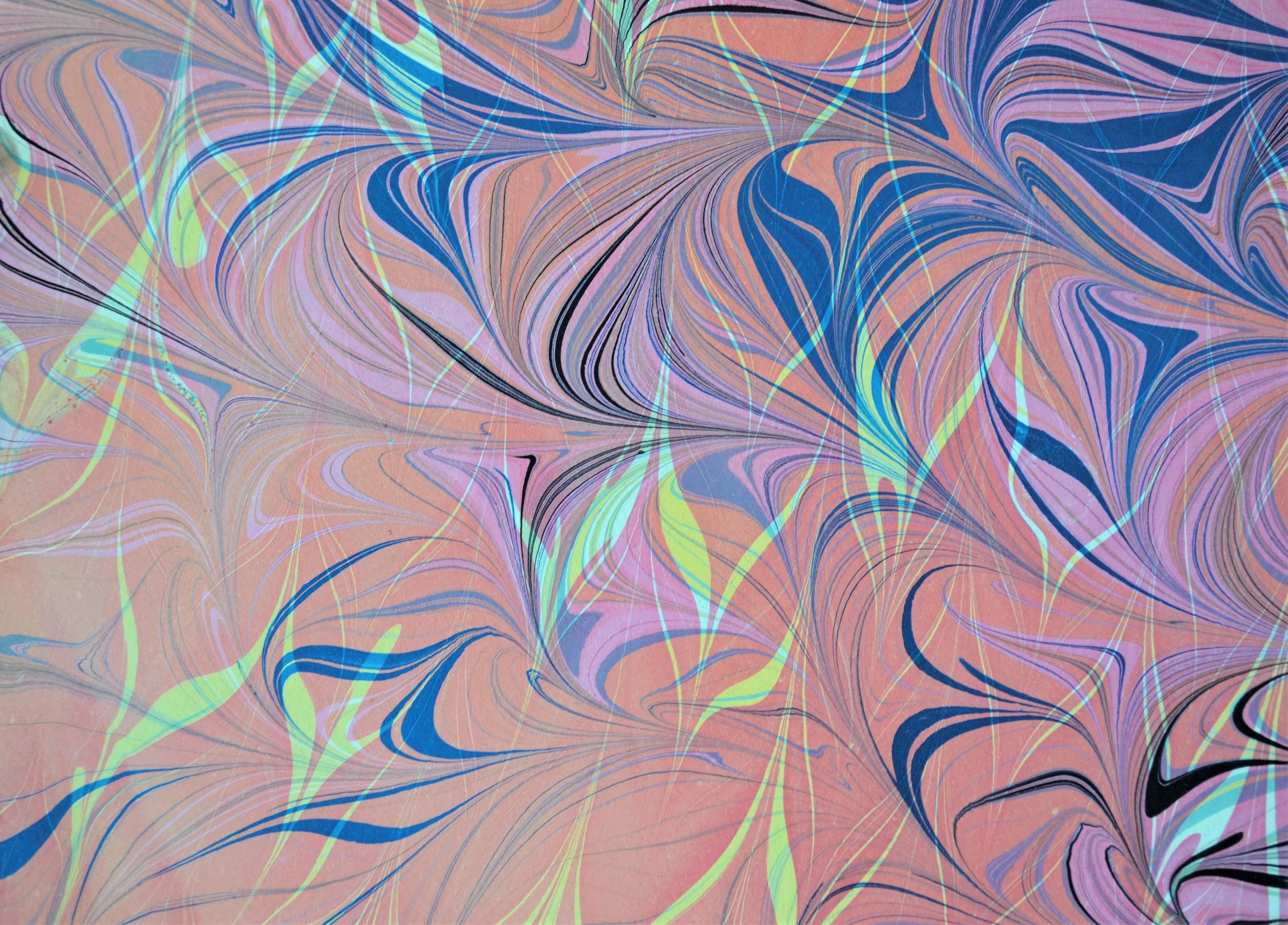
An early double marbling

Nonpariel pattern (with a little flaw)

Practicing a fine-combed pattern

A smattering of "stones" breaking up a nonpariel
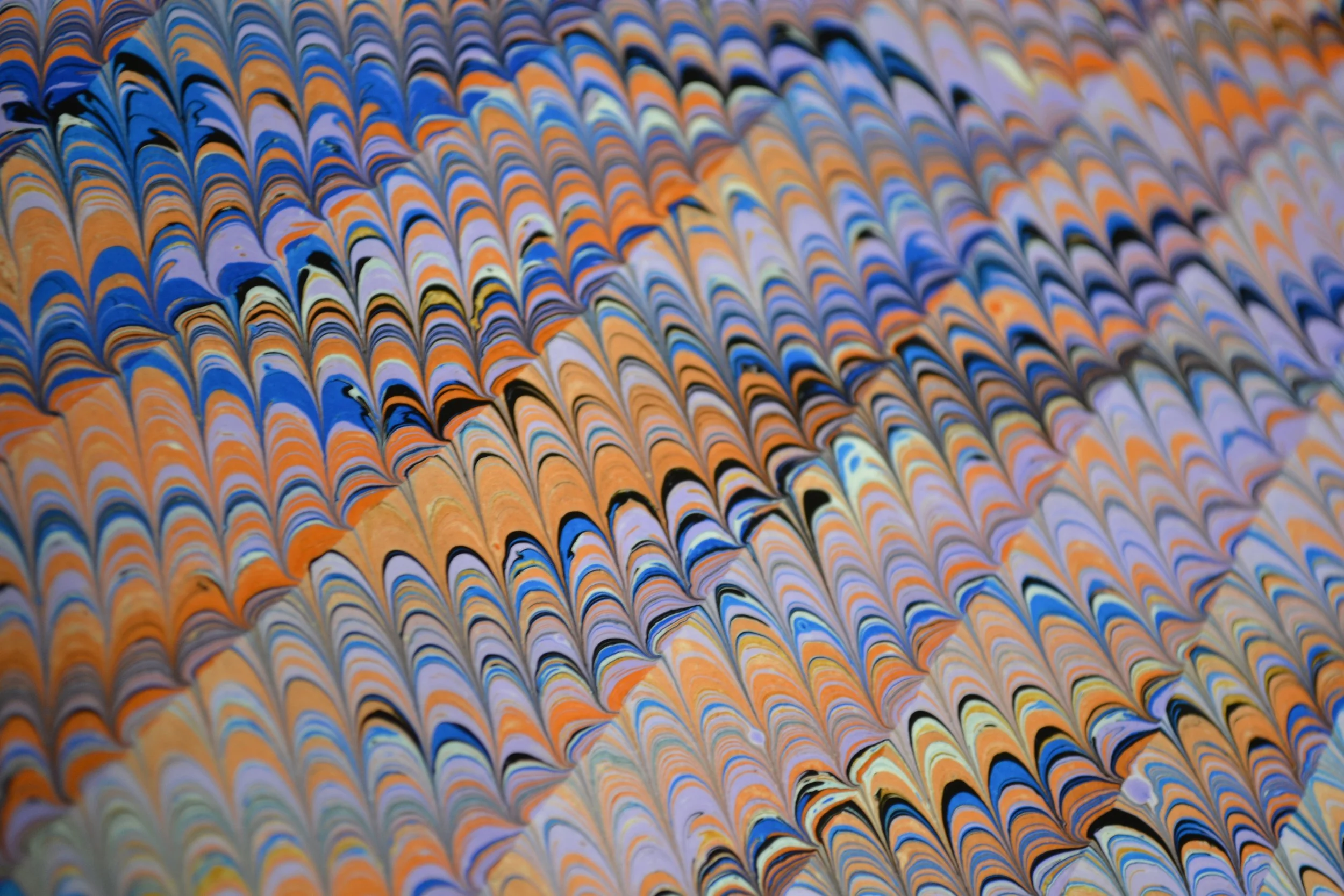
Nonpariel with a wave
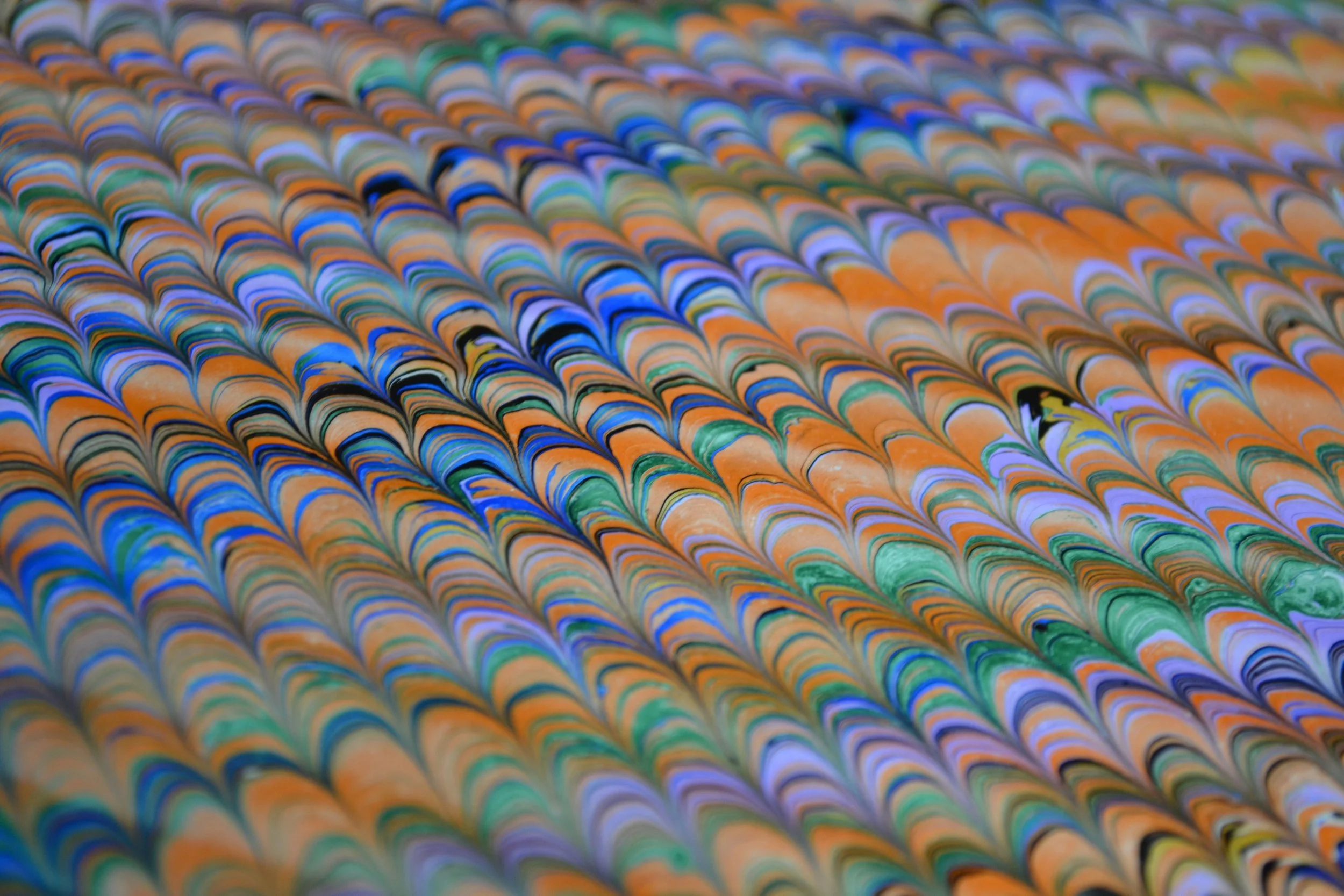
Another early nonpariel. Playing with the colors I received in my kit

Trying a swirl
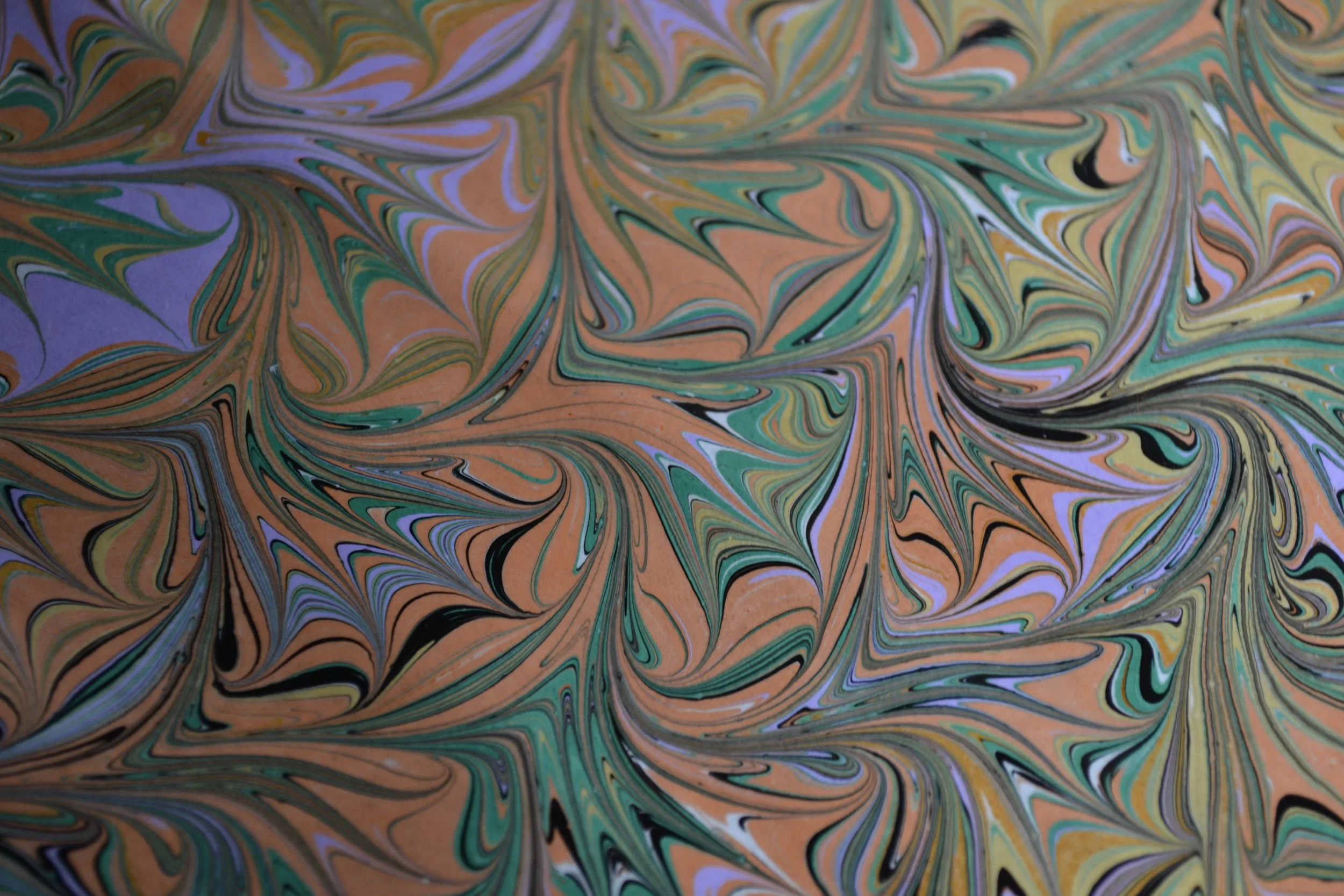
Frog foot pattern
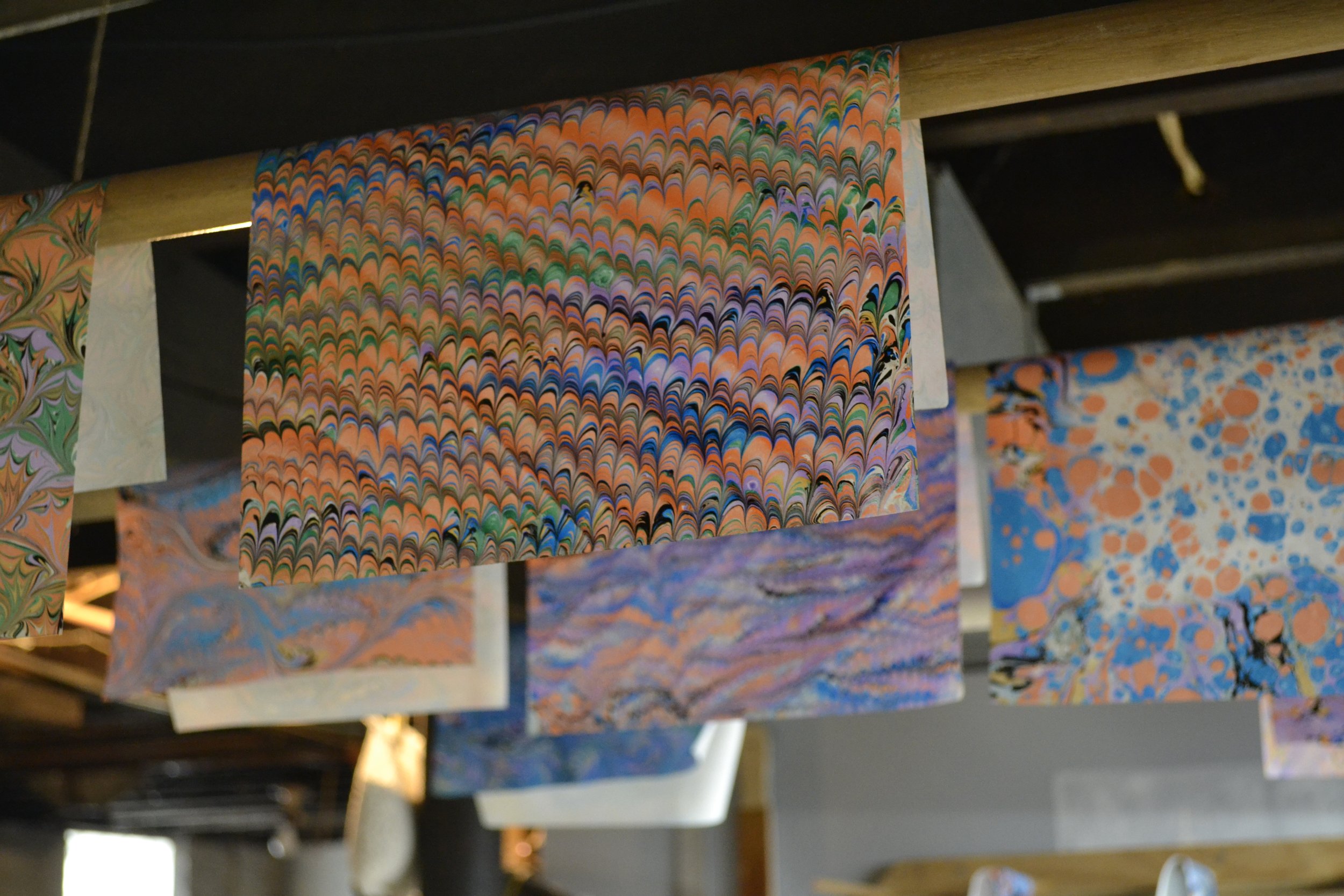
In the early days, I had some dowels set up for drying the papers

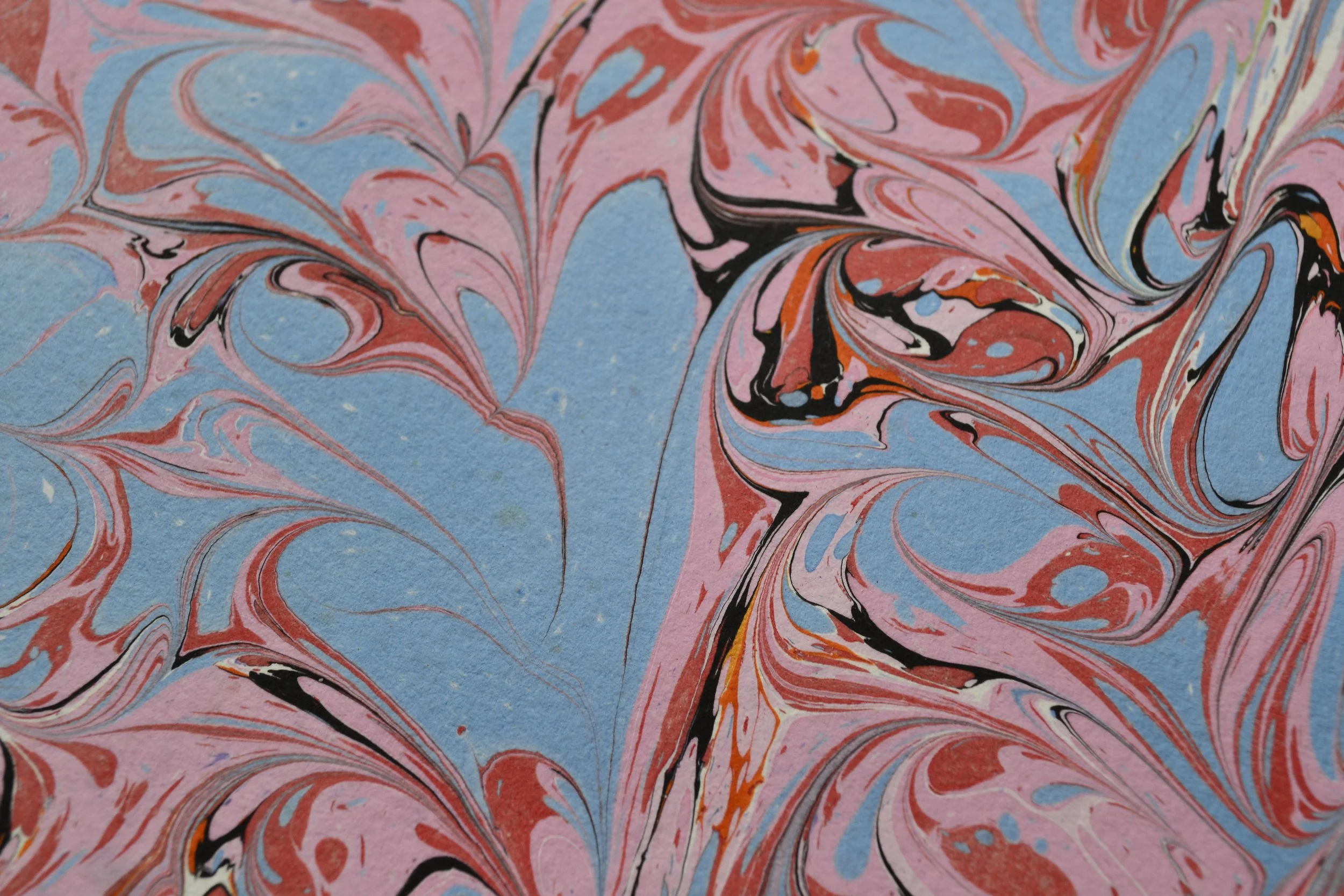

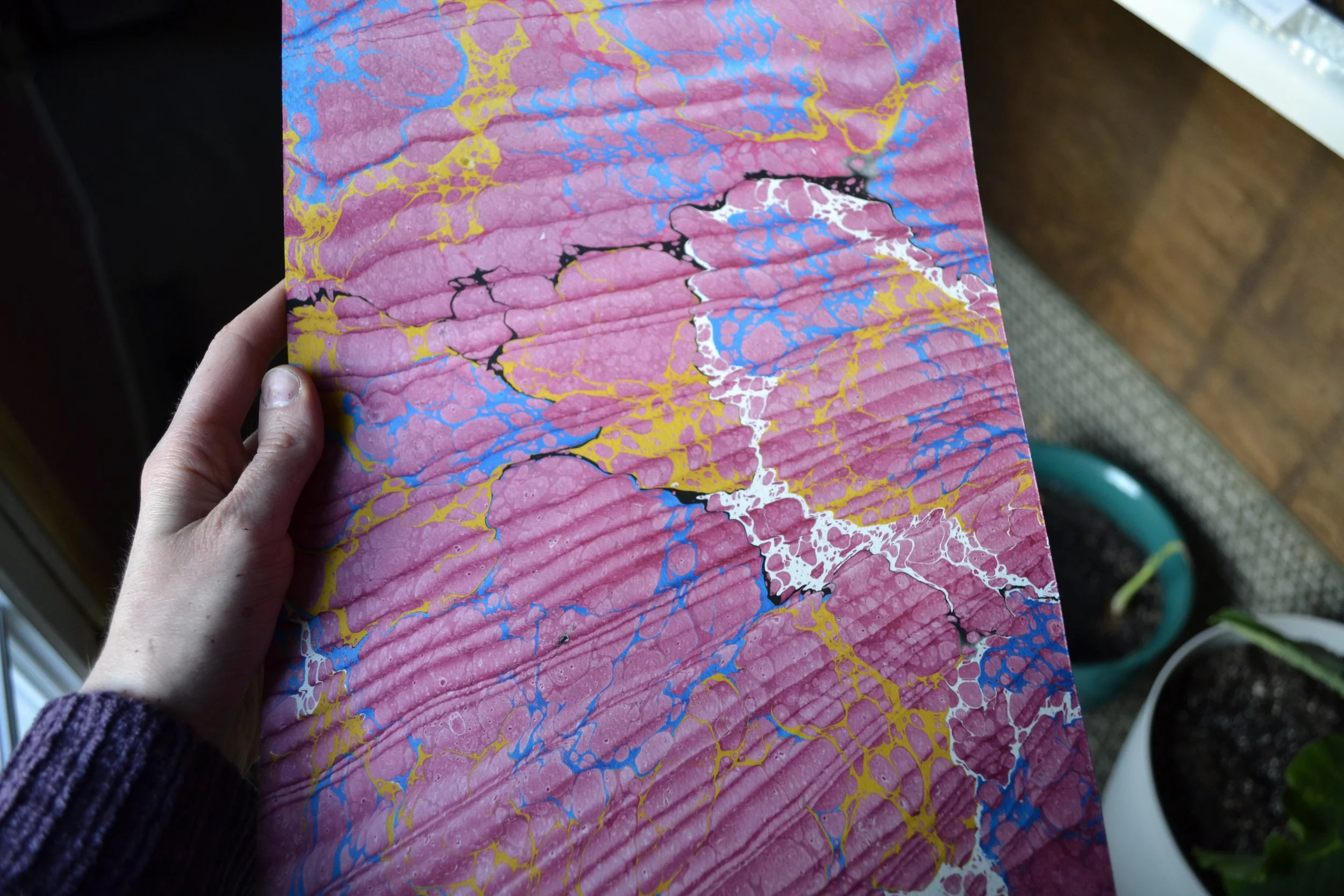
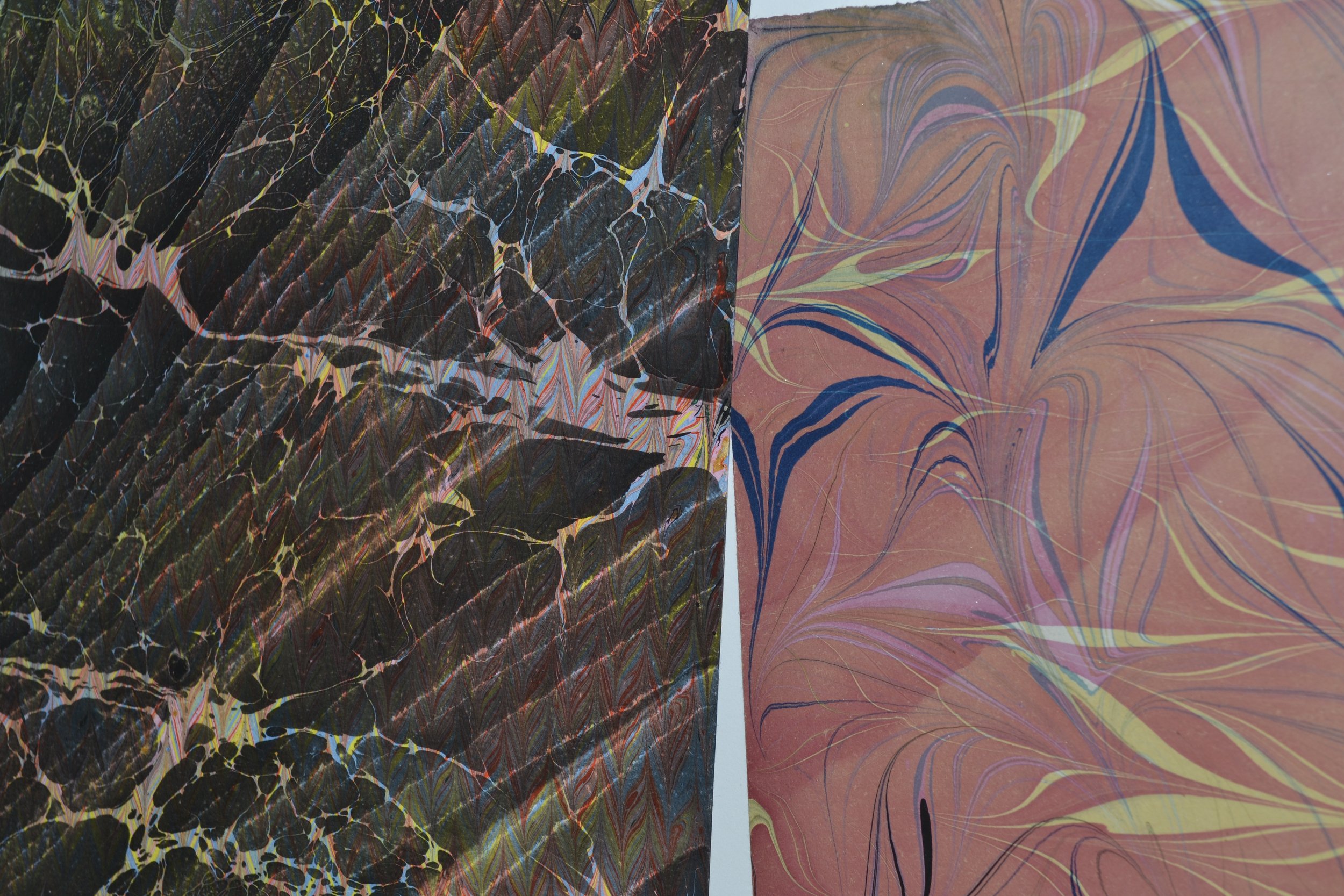
Early attempts at double marblings
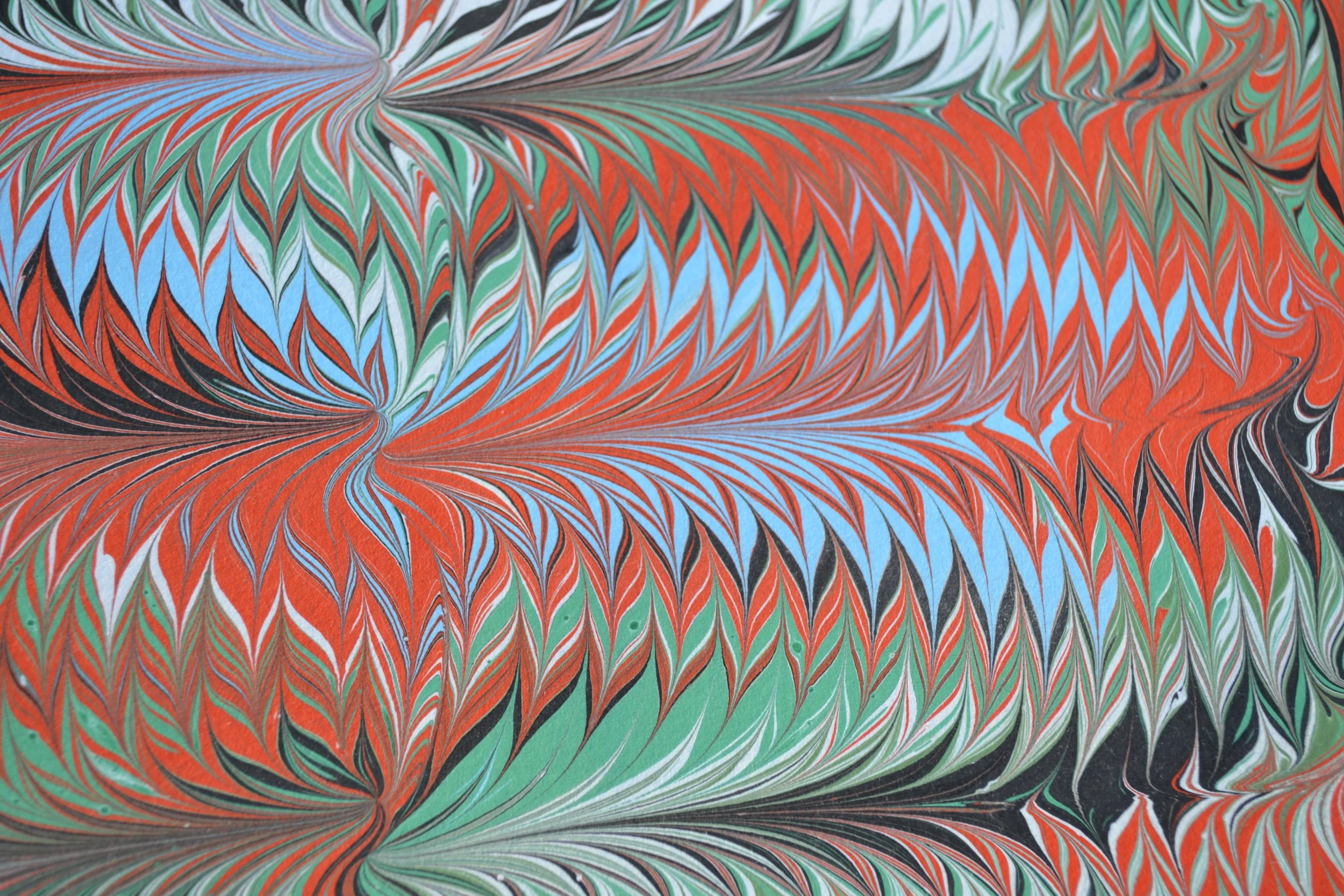
Trying to achieve the "chrysanthemum" pattern
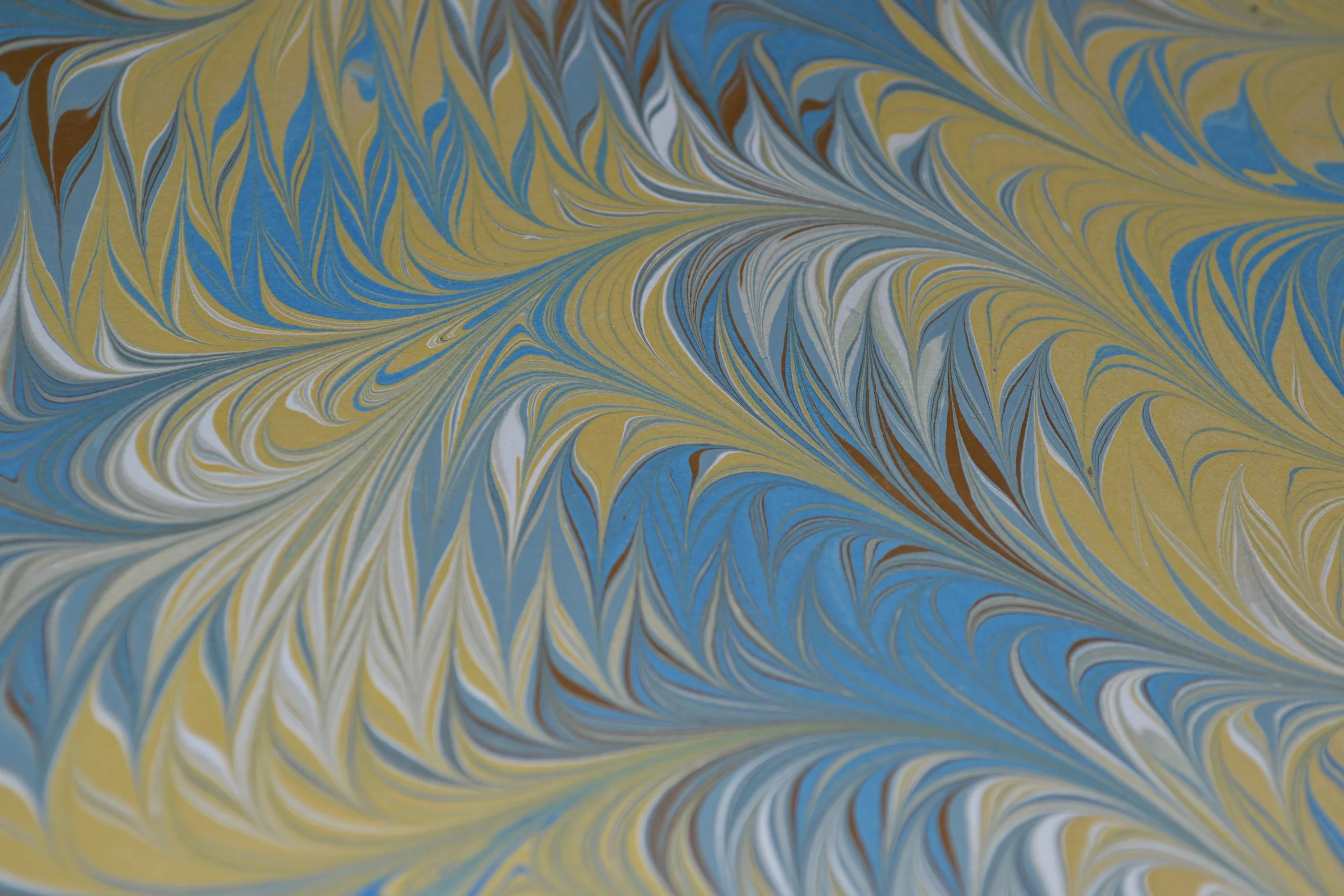

Soon I was mixing my own acrylic paints to use.
My approach to marbling is one of discovery and play. I rarely go into a marbling session with an idea in mind of what I want to create. I watch how the paint is behaving and let it tell me what it wants to do. Marbling can be a fickle process, and I like to let it surprise me.

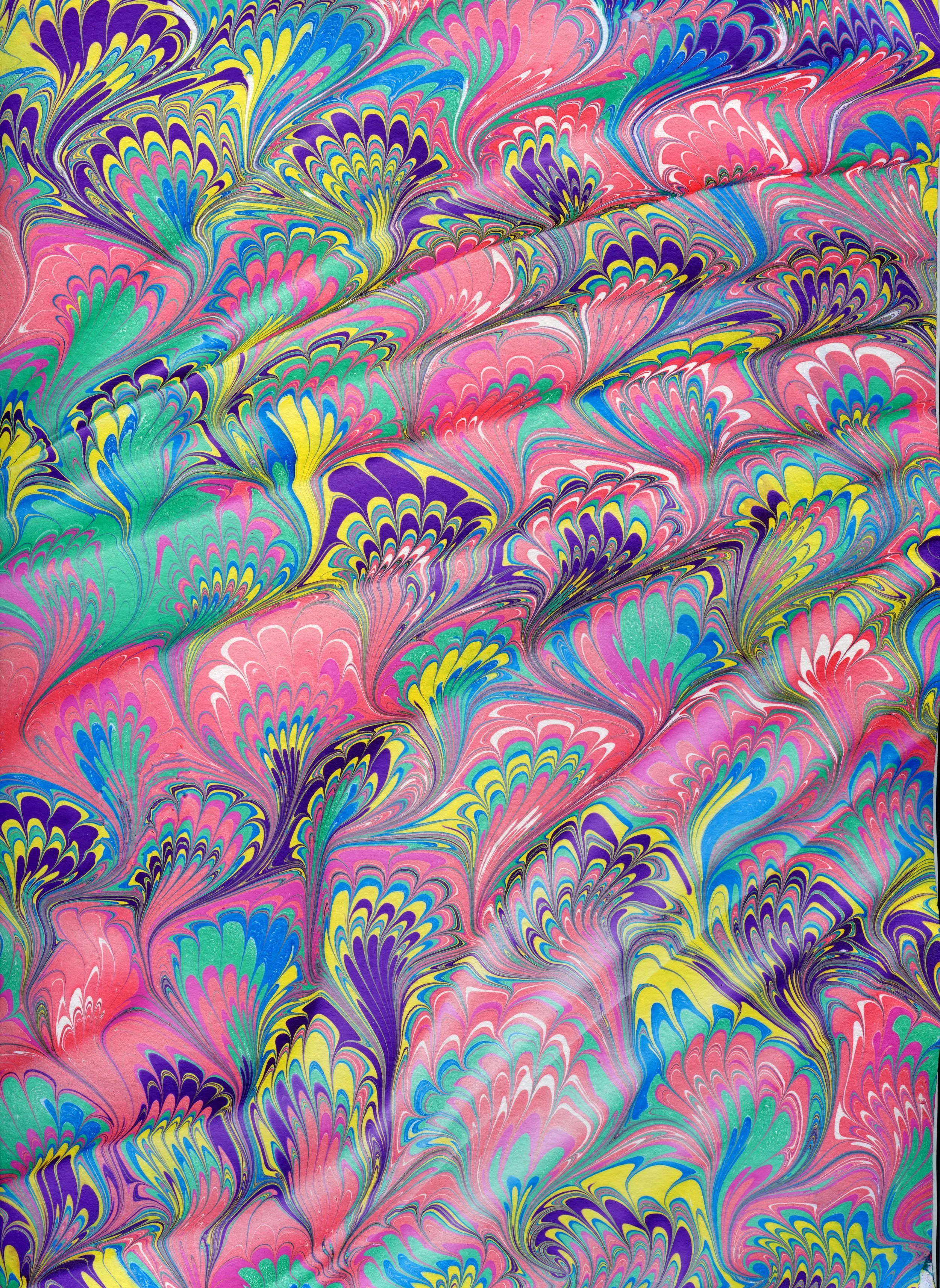



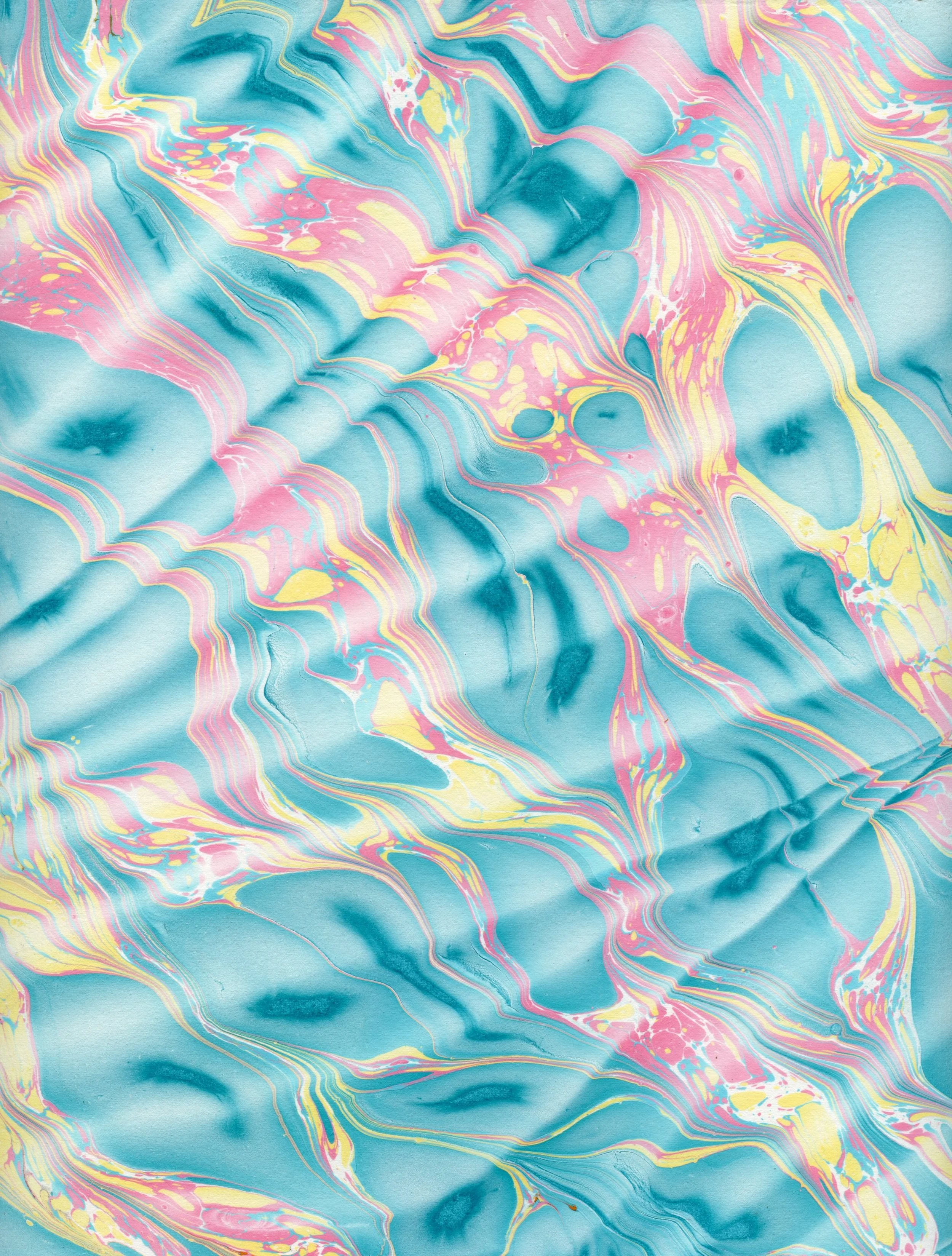







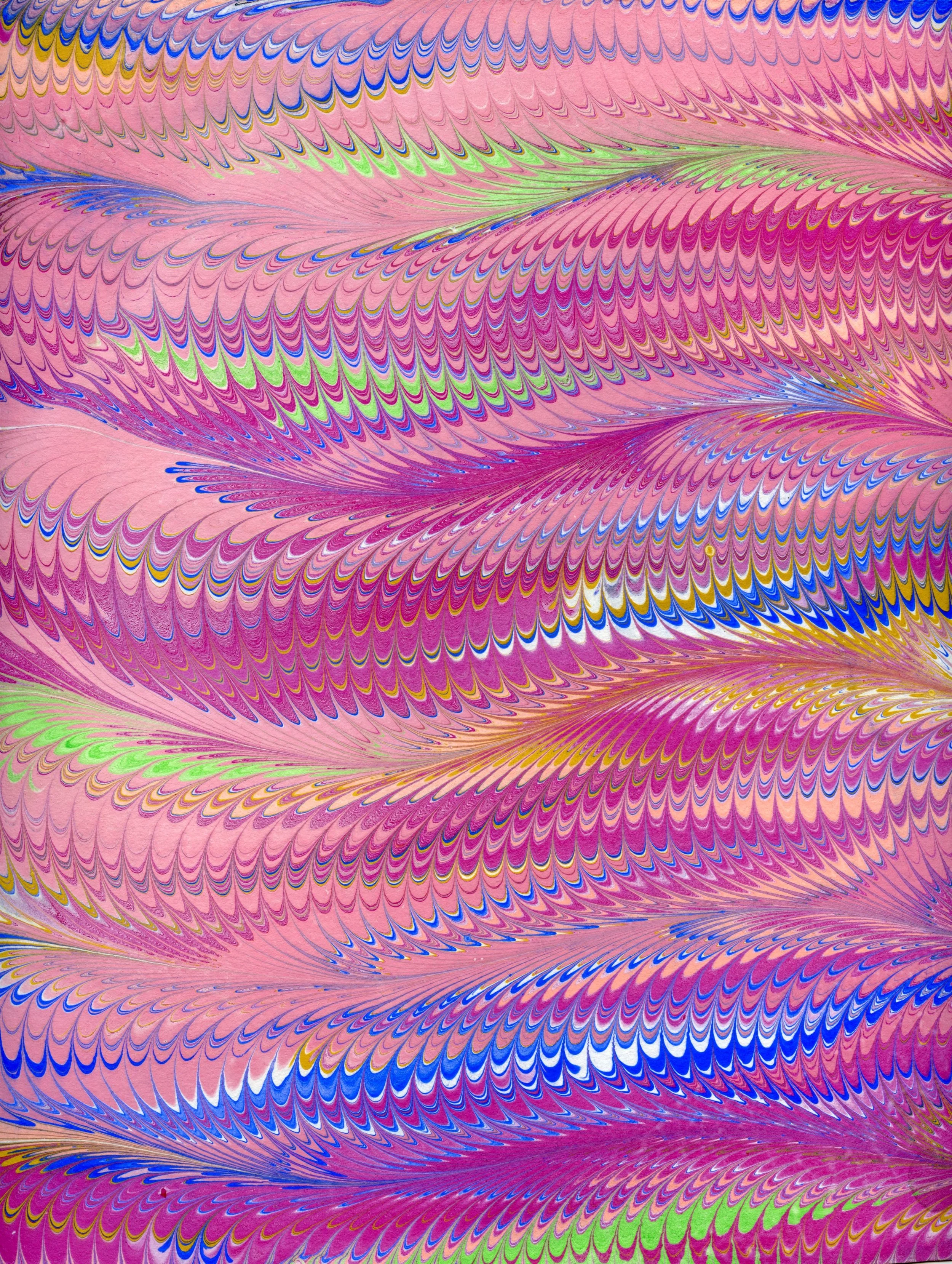




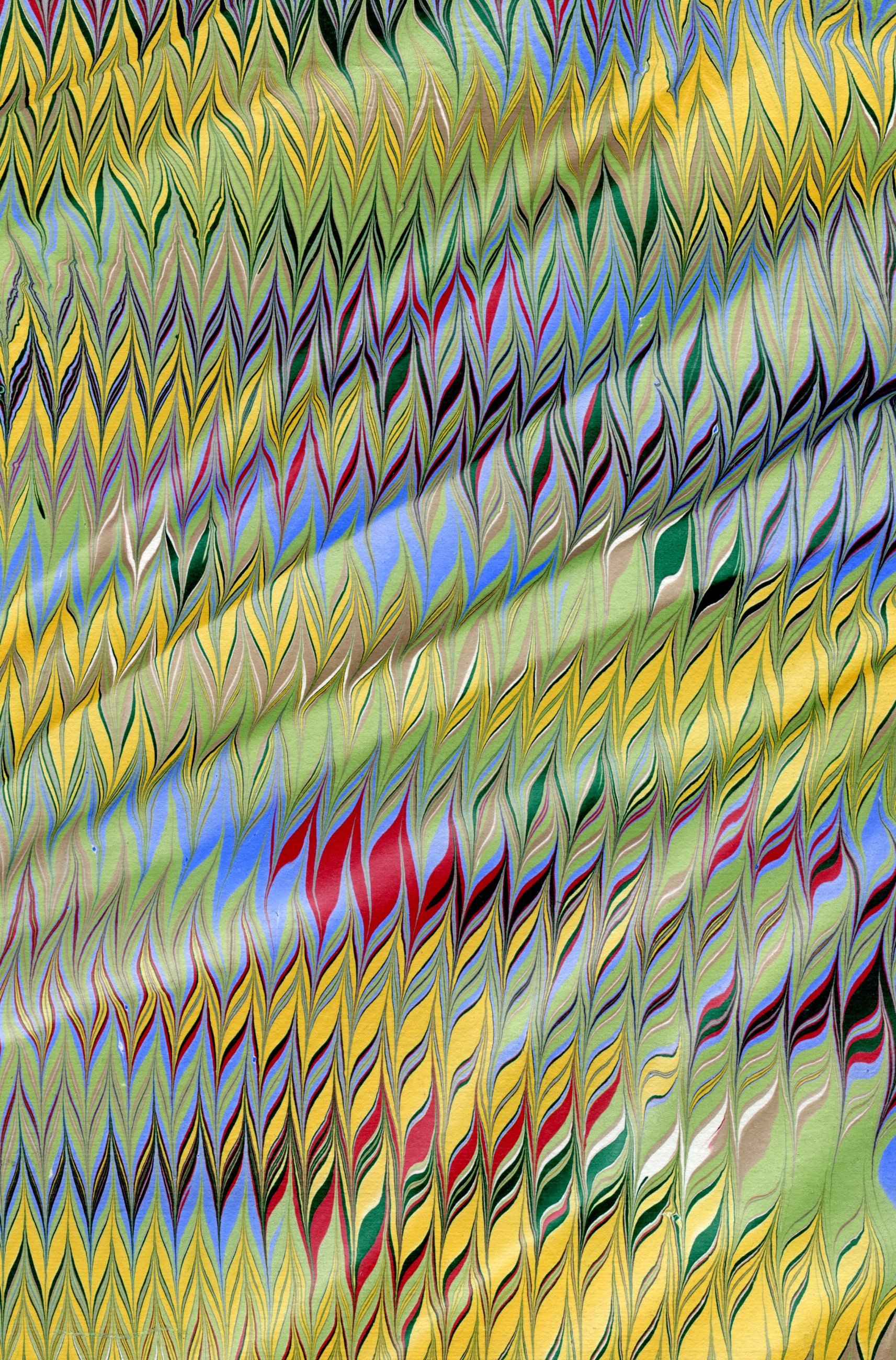

Double Marbling
After a paper is marbled, alum can be reapplied to put a second marbling layer on top of the first. This is my absolute favorite. The two patterns meld together, so it’s impossible to know which was marbled first. I love the richness of color achieved by the layering.




















